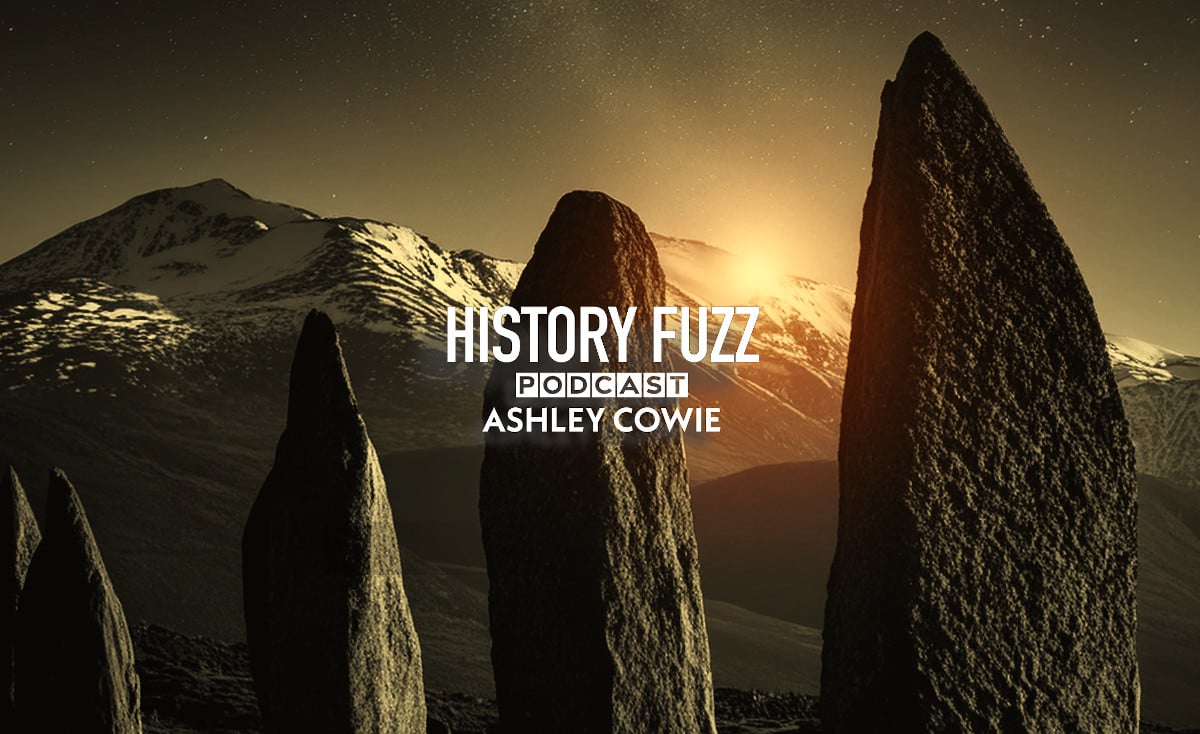
Podcast: History Fuzz: Episode 06: Dr. Robert Weiner. Anasazi ceremonial ways and the Mount Wilson Meridian
In this episode, Dr. Robert Weiner, an archaeologist in the Department of Anthropology at the University of Colorado, Boulder, offers a deep dive into the ancient Chacoan road networks in the U.S. Southwest. Specializing in religion, cognition, and mind, Dr. Weiner collaborates closely with the Navajo Nation, combining archaeological research with indigenous knowledge to interpret these monumental landscapes. Far from serving purely practical purposes, the extensive network of Chacoan roads reflects a complex interaction between architecture, astronomy, mythology, and spirituality. Dr. Weiner’s holistic perspective reveals how these roads functioned as more than transportation routes—they embodied sacred connections between the people, the land, and the cosmos.

Fig 01: Episode Graphic. Courtesy of the author.
Building on insights introduced by Professor Steven Lekson in Episode 02, Dr. Weiner takes listeners deeper into the world of Chaco Canyon. Lekson described an expansive matrix of roads, stretching across the desert and interwoven with astronomical alignments. Dr. Weiner expands on this, emphasizing that these roads were part of a carefully designed sacred landscape, integrating not only astronomical elements but also mythological and ritual significance. This episode explores how indigenous oral traditions and cosmologies help archaeologists understand the intentions behind these engineered landscapes, which transcend Western notions of functionality. Roads, in this context, served as spiritual conduits, linking ceremonial sites with celestial bodies and sacred spaces across vast distances.
A key theme in the conversation is the concept of the Chaco Meridian, a north-south axis proposed by Professor Lekson. This alignment theory suggests that major sites, including Aztec Ruin and the ancient city of Casas Grandes in northern Mexico, were intentionally placed along this meridian. Dr. Weiner delves into the significance of Aztec Ruin, a key Chacoan outpost, positioned directly south of Mount Wilson. The episode discusses whether this alignment reflects intentional planning and spiritual continuity across time and space. Could these alignments have symbolized movements of the people or celestial migrations? Dr. Weiner’s research suggests that such planning may have extended even further south, connecting the Chacoan world to distant regions like Casas Grandes, thus creating a network of sacred geographies that unified ancient communities.

Fig 02: A National Park Service map of the road network around the Pueblo Alto community. (Public Domain)
Throughout the episode, Dr. Weiner emphasizes the need to view these landscapes through a holistic, animistic perspective—one that contrasts sharply with modern scientific paradigms. In the Chacoan worldview, the material world, the cosmos, and human consciousness were deeply interconnected. Structures, roads, and alignments were not seen as separate from the spiritual or mental realms but were instead manifestations of an integrated system of thought. This challenges Western assumptions that tend to divide material function from spiritual meaning. For the ancient builders of Chaco Canyon, roads could represent more than just paths for travel—they were expressions of cosmological journeys, perhaps mimicking the movements of stars or ancestors across the sky.
Dr. Weiner’s collaboration with the Navajo Nation plays a crucial role in this research. He underscores the importance of working with indigenous communities to uncover meanings that might otherwise remain hidden from archaeologists. Oral traditions and indigenous spirituality offer insights into the ancient landscape that are impossible to derive from material evidence alone. Dr. Weiner urges archaeologists to move beyond purely material interpretations and to incorporate indigenous knowledge systems to fully appreciate the significance of ancient sites like Chaco Canyon. He explains that indigenous perspectives provide archaeologists with the tools to understand how these structures reflect a relationship with the landscape that is both practical and spiritual.
The conversation also touches on how archaeology benefits from fieldwork grounded in collaboration, combining scientific tools with indigenous frameworks to unlock new interpretations. Dr. Weiner highlights the importance of balancing empirical data with cosmological understanding, revealing that both approaches are essential to making sense of complex alignments. In discussing the astronomical elements of Chacoan architecture, he demonstrates how celestial observations were interwoven with cultural practices, transforming the landscape into a canvas where myth and science coexisted.




